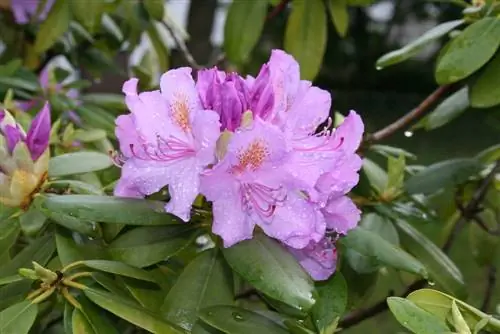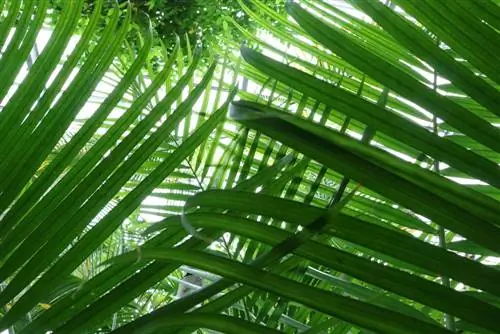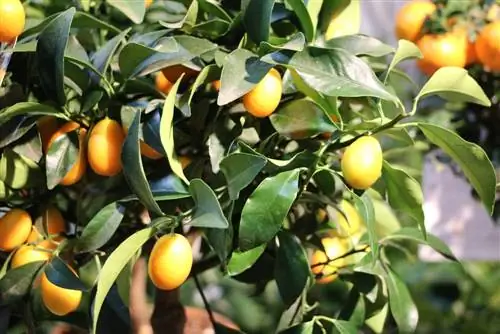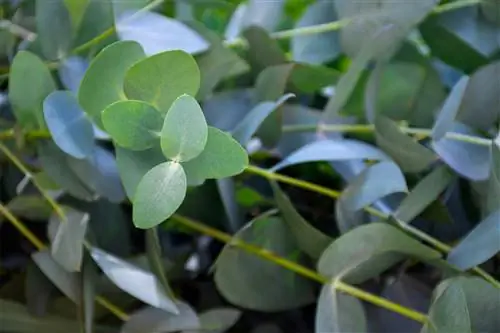- Author admin [email protected].
- Public 2023-12-17 03:39.
- Last modified 2025-01-24 12:45.
Azaleas belong to the rhododendron genus, although a distinction must be made between garden and house plants. Because the plants cultivated in the garden are evergreen and do not lose their leaves even in winter, indoor azaleas, on the other hand, often lose their leaves in autumn. In addition, the well-known rhododendron bush in particular reaches a considerable height. Fertilizing is very easy for all plants, especially with many different home remedies.
Azalea or Rhododendron
If you need to fertilize rhododendrons or azaleas, a distinction must be made here. Even though azaleas belong to the rhododendron genus, they are not the same variety. Above all, a distinction must be made between hardy and non-hardy plants. Rhododendrons also retain their green foliage in winter, while many azaleas shed their leaves in the cold season. But there are also other points of distinction:
- Garden azaleas
- Indoor azaleas
- bloom at different times
- Outdoor azaleas from May to June
- Indoor azaleas from September to April
- so pay attention to different fertilizer times
Tip:
When purchasing, you should pay attention to whether it is an indoor or a garden azalea. In addition to care, the right time for fertilization must also be coordinated, even if home remedies are used.
Soil texture
Above all, the right soil conditions are very important for all rhododendron species. Especially so that they bloom magnificently at certain times. For this purpose, all plants, whether grown indoors or in the garden, need slightly acidic, loose soil with enough oxygen. The pH value should always be between four and six. However, the rhododendron reacts very sensitively to a higher pH value.
Tip:
With a set for measuring the pH value from a well-stocked gardening store, the pH value at the location of the garden azalea or the potting soil of the indoor azalea can be checked at any time and, if necessary, traded directly. This is particularly important if fertilizer from household products is mainly used.
Ideal composition of azalea fertilizer
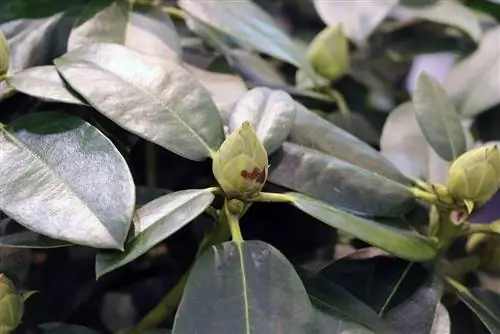
Fertilizer for rhododendron requires a certain composition. What is particularly important here is the mixture called NPK. The name stands primarily for the main components of the fertilizer:
- Nitrogen
- Phosphorus
- Potassium
So, potassium is needed for resistance, phosphorus for flowering and nitrogen for the general growth of the plant. The mixing ratio for azaleas consists of six parts, three parts and six parts. Special commercial fertilizer therefore already has the correct mixing ratio.
Tip:
You shouldn't do without purchased, ready-made fertilizer for rhododendrons and azaleas. However, this can be given alternately with the fertilizers from home remedies.
Fertilization time
Indoor azaleas and garden azaleas bloom at very different times. Therefore, the different fertilizers must be given at different times. The following times for fertilization should be observed:
- Indoor azaleas bloom in winter
- Fertilization time from spring to autumn
- stop fertilization completely over the winter
- Garden azaleas bloom over the summer
- first fertilizer application March to April
- no fertilizer during the flowering period
- Second fertilizer application June to July
- then no further fertilizer applications
Fertilizing with coffee grounds
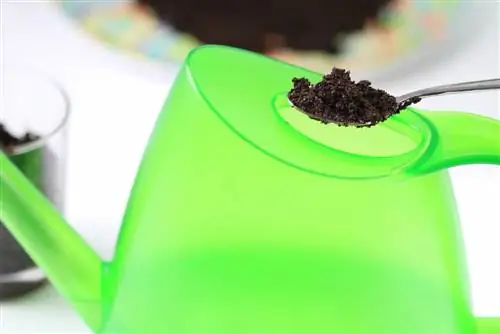
If you drink a lot of coffee, you can use it to make an inexpensive fertilizer for your azaleas. Additional fertilization with coffee grounds is always recommended, especially for indoor azaleas that are grown in pots. Because it contains all the ingredients such as potassium, phosphorus and nitrogen that the plants need. When fertilizing with coffee grounds, the procedure is as follows:
- allow to dry for fertilizing potted plants
- moist coffee grounds promote mold formation in the soil
- collect in a large container
- let dry in a warm dry place
- the filter used can be emptied every morning
- so there is always enough fertilizer available
- also for large areas in the garden
If rhododendrons are regularly fertilized with coffee grounds in the garden twice a year and as houseplants every two to three weeks from spring to autumn, then commercial fertilizer can be dispensed with entirely. An even greater fertilizing effect can also be achieved if the coffee grounds are regularly added to the compost and mixed.
Tip:
Coffee grounds are a very valuable fertilizer for azaleas. In addition to the abundant additives that the plant needs for its growth and beautiful flowering, coffee grounds used in the garden also attract earthworms and the soil always remains loose. Snails also avoid areas fertilized with coffee grounds.
Fertilizing with banana peels
If you like eating bananas, you can be happy because banana peels are a good fertilizer for azaleas. Above all, this supports flowering. When fertilizing with banana peels, the procedure is as follows:
- Cut banana peel into small pieces
- the smaller, the less noticeable they are
- mix into the soil when repotting
- or fold carefully
- makes good humus when rotting
Tea water or grounds

If a lot of black or green tea without additives is drunk in the household, then the used tea bags are also suitable for fertilization. The ingredients are similar to coffee, but only contained in a weaker form. The powder from the bag can be dried or the used tea bag can simply be hung in the water for a few hours. When drying the tea grounds, proceed as follows:
- tear open used tea bag
- Pour contents into a large container
- let it dry well in a warm and dry place
- tea grounds used wet cause the earth to become moldy
Due to the quantity available, the use of tea water or dried tea grounds is only suitable for houseplants that are usually cultivated in a smaller container.
Tip:
The contents of a tea bag are not as productive as those of a coffee filter. Therefore, when collecting the used tea bags, it takes longer until enough fertilizer is collected for a bucket. Therefore, watering with old, stale tea water is also a good alternative.
Horse and cow dung
If you have a farmer nearby, you can also pick up cow or horse manure here for fertilizer. However, due to the smell, this fertilization is only suitable for rhododendrons cultivated in the garden. The manure from the animals contains many minerals and nutrients and should be lifted once in the spring.
Ashes
If you have a fireplace or grill a lot outdoors, you can use the resulting wood ash for fertilization. Wood ash contains a lot of the mineral potassium, which is good for plant growth. The ashes can simply be scattered on the ground around the rhododendron in the garden. Before planting a new plant, simply mix ash with the soil. Potted plants also enjoy a portion of wood ash sprinkled on their soil every now and then.
Compost
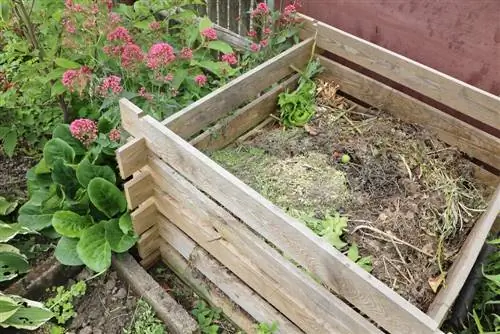
Compost is the general weapon when it comes to fertilizer, including as a preparation for the soil of garden azaleas. The well-decomposed compost is lifted directly underground in spring and summer after flowering. Dig carefully so that the roots of the plants are not damaged. Even when new plantings are made, the soil is prepared with compost beforehand and this is then submerged. Compost is usually not particularly suitable for houseplants due to its smell. But compost can be made as a liquid fertilizer, especially for plants grown in pots. The procedure is as follows:
- about 250 grams of compost
- put in a two liter bottle
- pour water
- let it steep in direct sunlight for about two days
- The brew can be used to water and fertilize at the same time
Decoction of nettles
Stinging nettles are said to have he althy properties in many respects and a home-made nettle decoction is also a good fertilizer. The plant is rich in nitrogen, which the rhododendron needs for its growth. The procedure for making nettle broth is as follows:
- Use gloves when picking
- Stinging nettles are often found on the roadsides
- or in natural meadows
- can also be cultivated in your own small bed
- Put nettles in a container
- Add water
- do not fill to the brim
- otherwise it will spill over during fermentation
- add one liter of water to 100 grams of nettles
- cover and leave to stand for about three weeks

The brew is a good fertilizer for in between, especially for indoor azaleas, which should be fertilized regularly every two to three weeks. However, the broth should always be diluted with irrigation water and not poured directly undiluted onto the soil.
Tip:
Comfrey, horsetail or dandelion can also be used as an alternative to nettles. If you want to make this fertilizer from one or more of these plants but don't want to spend a long time searching, you can create a small garden bed for fertilizer production. Since these are weeds, they do not require any care and grow on their own, so to speak.
Water with vegetable water
Drained vegetable water from lunch should never be thrown away. Because this is ideal for watering the azaleas in between. Potato water in particular contains many minerals and nutrients after cooking that are good for the plant. However, when watering azaleas with vegetable water, care should be taken to ensure that the water used contains hardly any lime. Especially in areas with very hard water, it should be filtered well before cooking. In addition to potatoes, the following vegetables are particularly suitable:
- Asparagus
- Cauliflower
- Broccoli
- all types of cabbage
Tip:
Let the vegetable water cool down well before watering, otherwise the roots will be damaged by the heat and burn.
Be careful with home remedies
Home remedies as fertilizer for rhododendrons should not be used too often; a little caution is also required here. The egg water mentioned on many gardening sites is in no way suitable for azaleas and rhododendrons, as it contains far too much lime, which the plants cannot tolerate. They react very sensitively to the addition of lime. But coffee or tea is also only suitable for fertilization to a limited extent. If you overdose, these home remedies can harm rather than promote growth. When using home remedies as fertilizer, you should generally proceed as follows:
- alternate several remedies
- follow a certain order
- Regular changing protects the plants
- Always choose the right nutrients for the plants
- never use feces from pets (this includes cats, rabbits, dogs and also poultry - contains too many toxins)
- Do not use lemonade or cola (these are not natural substances - are chemically produced)

